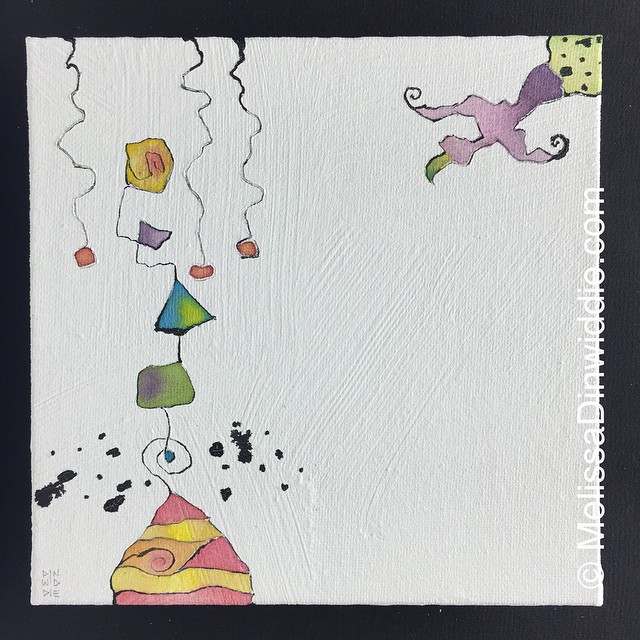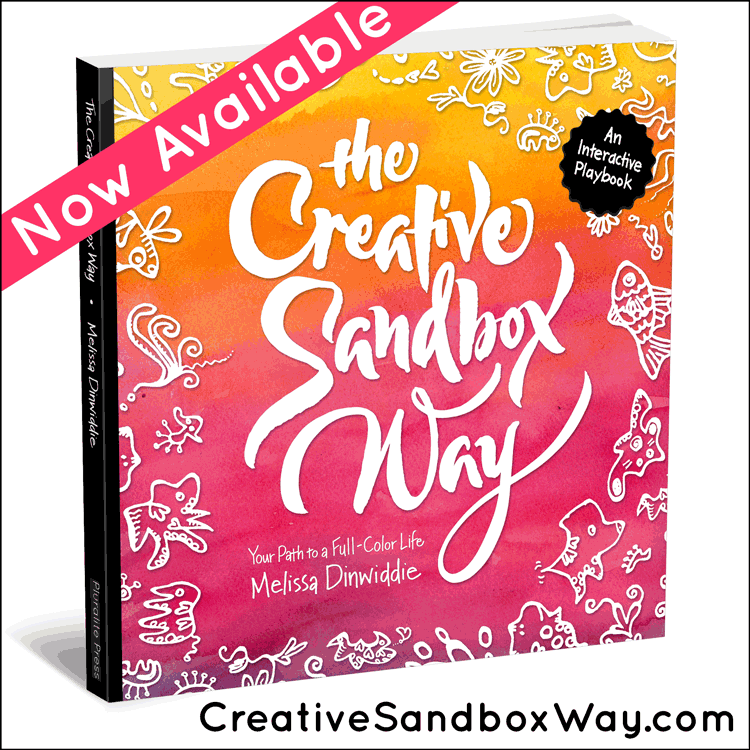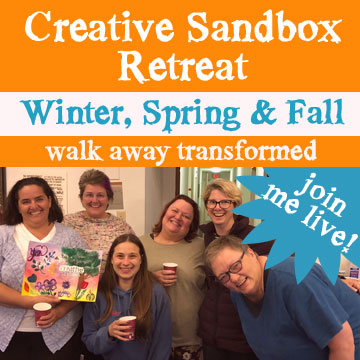
Available for purchase — contact me for details.
I don’t know about you, but I hate being tied down or boxed in. I always thought of myself as allergic to schedules.
I’m a creative — I want to be free to do whatever I want, whenever I want! Routine is just so, well, routine.
Boooooooooring!
But is routine really so constraining? The truth is, we are all creatures of habit.
Do a scan of your day and you’ll find routines everywhere you look.
In fact, Charles Duhigg, author of The Power of Habit, cites studies that have shown that 40-45% of what we do every day is actually habit, even if it feels like we’re making a decision.
Think about it:
– Where your hand reaches to switch on the light in the bathroom, or which drawer you go to when you want a fork for dinner.
– Putting your car into reverse to back out of your driveway.
– Driving home from work.
– Getting the toothpaste out of the tube and onto your toothbrush to brush your teeth.
We don’t have to think about what we’re doing in order to do these things, because they have become routine. There are literally pathways in our brains that, when activated, fire on their own. That is the true definition of a habit.
Routine as Liberation
As Duhigg writes on page 20 of his book, “When a habit emerges, the brain stops fully participating in decision making. It stops working so hard, or diverts focus to other tasks.”
What a beautiful thing! Seen in this light, routines are not boring and constricting at all — they are liberating!
Think about this: Have you ever had a great idea or insight while driving, taking a walk or taking a shower? That’s only possible because a long time ago you learned to walk; learned all the steps necessary to drive a car; learned how to pick up the shampoo bottle with one hand, flip the cap open, squeeze a dollop into your other hand, put the bottle down, and use both hands to scrub the shampoo into your hair.
These actions are now habits, and because you do them automatically, without having to consciously think about them, your brain is free to focus on other things.
That is liberation!
Routine as Anti-Anxiety Med
Rituals and routines offer a big psychological benefit, too, by acting as what Jonathan Fields refers to as certainty anchors. He writes in his book, Uncertainty:
A certainty anchor is a practice or process that adds something known and reliable to your life when you may otherwise feel you’re spinning off in a million different directions. Rituals and routines can function as certainty anchors; their power comes from the simple fact that they are always there. They are grounding experiences to which you can always return, no matter what’s going on. Their consistency makes them effective tools to counter the anxiety that comes not only from living in uncertain times, but from embracing endeavors that ramp uncertainty even higher.
For the creator, whose very existence depends on the ability to spend vast amounts of time living and operating in the ethereal sea of uncertainty and anxiety that is creation, rituals in every part of life serve as a source of psychic bedrock. They provide just enough of a foundation to allow you to free up that part of your brain that needs permission to run unencumbered in the quest to create the greatest possible something from nothing.
Experimenting with Liberating My Own Brain: My Morning Ritual
In light of all this evidence, in the past few years I decided to experiment with making my days more routinized.
To appease my rebellious, schedule-allergic creative spirit, who still gets very cranky at the mere mention of the words “routine” or “schedule,” I started slowly, with just one daily habit — meditation. Following my own advice from my Creative Sandbox Rules, I made my commitment ridiculously achievable: just 10 to 15 minutes a day.
Why just ten minutes? Because tiny commitments make success more likely, and each success sends a signal to my brain that, yes, I can do this! (Click to tweet!)
Just as important, on the occasions when I stumble (which we all do eventually, because we’re human), my momentum may get thrown off, but because my commitment is ridiculously achievable it’s ever so much easier to get back on track.
And as I like to say, of all the practices we engage in, the most important practice of all is just getting back on the wagon. (Click to tweet!)
Sending a Signal to My Brain
Over time, my meditation practice has become an anchor to my morning. My morning meditation is not yet ingrained to the same extent as opening a tube of toothpaste, but the days when I skip meditating I feel a bit off all day.
On the other hand, starting my day on my meditation cushion sets the tone.
Maintaining this morning ritual sends a signal to my brain that today is a day I keep my commitments. (Click to tweet!)
When I start my morning with that internal message, whatever goals I have for the day are that much more likely to get done.
Building a Habit Chain
Gradually, I’ve added more rituals onto this initial “anchor habit.” Link by link, one new habit at a time, I’ve created a chain of rituals that set my day off in the right direction.
Here’s what a typical morning looks like these days. Depending on what time I got to bed and how well I slept the night before, I wake up sometime between 6:00 and 7:30am, then I:
1) Use the bathroom, brush teeth, drink two big glasses of water.
2) Meditate for 10-15 minutes (depending on how late it is).
3) Do Ming Method stretching series (hip flexor stretch, hamstring series, and if time, also pushups + chest muscle stretch) while listening to or reading professional development recording or book.
4) Journal/brain-dump for 10-30 minutes (depending on time).
5) Vacuum kitty fluffs and cat litter tracks in studio; scoop litter box.
6) Head downstairs to the kitchen to feed cat, eat breakfast, and if time, add a layer of varnish to the paintings on the patio.
7) Do Ming Method neck stretches while boiling tea water.
This is my morning ritual. All of it happens before 9:00am, and if I get to everything in the list above and it’s still before 9:00am, at this point I’ll jump in the Creative Sandbox for some painting or music-making.
Then at 9:00am I either paint, or hop on my treadmill to write while I walk, spend some time making music, or hop on a check-in call with my Dream-to-Done Accelerator group mentorship peeps.
Flexible Scheduling but No Decision Fatigue
You’ll notice that I don’t have specific times for each of the seven items in my morning ritual. The order stays consistent, but the exact time that I get to each thing varies.
This is where my rebellious, schedule-allergic creative spirit gets her way.
I don’t like alarm clocks, so unless I have to catch a plane or get to an early morning speaking engagement, I never use one.
Sleep is a high priority in my life, so I let my body sleep as long as it needs to (which, if I want to be awake by 6:00 or 7:00, means getting to bed by 10:30 or 11:00 at the latest. Getting to bed early is its own challenge, which I’ll write more about in another post.) Once I wake up, though, whether it’s at 4:30 (thank you, insomnia) 0r 7:30, I do my bathroom stuff, drink two glasses of water, and sit down on my meditation cushion.
From there, the other links in my chain roll along on their own accord.
I do not have to think about it. I don’t have to make a decision about what to do next, saving my brain from getting fried by decision fatigue early in the morning.
No wonder I’m more productive for the whole rest of my day!
Grounding Myself to Fly
Given my life-long allergy to schedules and routines, the thing I’ve found most surprising about maintaining a consistent morning ritual is how free it makes me feel.
Having a regular morning routine does not make me feel constricted and boxed in! To the contrary, it makes me feel like a superhero!
It reminds me of flying a kite.
If you take a kite up to a windy hill and throw it up into the air, it will flutter and sputter. It may fly away from you for a bit, but it’s completely out of control, and if it doesn’t end up in a faraway tree, it will ultimately just flop to the ground.
Tie a string to that kite, though, and hold tightly to the end of it, and everything changes. Now your kite is really flying, and you can make it swoop and dive and do all sorts of tricks.
It needs to be grounded to the earth to experience such freedom, though.
If you are a kite, your daily routine is your kite string. A morning ritual grounds you and allows you to fly.
Try it yourself, and let me know how it goes.

PS — Pssst! Know someone who might benefit from seeing this today? Pass it on!





OMG you are so right! I am constantly telling myself that I need to change my morning routine from: using the bathroom, coming downstairs, open the drapes, take the dog out, make breakfast…and then just sit, stare at the walls, find anything to do that allows me to do nothing. (email, Facebook,etc) I’ve found that if I have scheduled my morning the night before, (usually because someone is coming over or I have to be out the door at a particular time), I get more done. BUT my hatred of routine and schedules makes it really hard to make a schedule and stick to it. I know what I should do in the morning to make me more productive, I just need TO DO IT!
It helps me to think of it as a “morning ritual,” Delores, rather than than a “routine” or “schedule.” And it really helps to remind myself of the kite metaphor! 🙂
Yep, morning ritual sounds way better. 🙂 I’ll use that one in the morning. The kite aspect works too. Alright, new mantra every morning: I’m a kite. I’m a kite. I’m a kite.
Thanks Melissa.
Delores
What a great post Melissa. I actually don’t mind having some ritual in my life, but I never really looked at it that way before. This was an eye-opening concept! Thanks!!
Yay! Glad it was eye-opening, Rebekah. 🙂
LOVE how you rock your routine!! I’m having a particularly OFF day bc the insomnia sort of wrecked my morning experience. If I don’t launch well, my whole day is filled with turbulence. I’m going to do an experiment right now: Get to my morning routine at 10:30 and see if it will generate a reset. Bc MERCY I need a reset. 🙂
Thanks, Mandy. And boy do I hear you about off days. I have them too, and it’s the same: when I don’t launch well, my whole day is filled with turbulence and lots of wheel-spinning…
Good luck with your reset! If you get even a tiny bit of reset benefit today, that will send a signal to your brain that YES, you CAN RESET! 🙂
Interestingly, the reset sort of works. not completely. 🙂 But sort of. Even today I forfeited my morning routine so I could finish/send my newsletter so I could PAINT some while the girls are in school. And so, I find myself a *tad* off and craving coffee. ha!! But I painted today. So the payoff, in this particular case, was worth it!
This is how it works for me, too: resetting works, sort of, but not completely.
Better than nothing, though, and then I’m more likely to be fully back on track the next day. 🙂
If you’d told me last year that a morning routine would make my days more anything I would have scoffed.
Yet in the past 14 days, I’ve only gotten through my full morning routine twice. I can tell. I feel like I’m pulling myself through my days as opposed to fully enjoying them – whatever may come.
I find myself cranky and distracted easily. But I eschewed the idea of a routine for too long to count. Now it’s importance is all too apparent.
As soon as I hit submit on this comment, it’s time to move back into my routine.
Yeah, I’m with you, LaShae! It has taken me a looooong time to embrace routines and rituals!!! 🙂
Good for you for getting back to yours. As I like to say, the most important practice of all is the practice of just getting back on the wagon. 😉
xom
I can’t wait to try this. But what happens if you have kids who interrupt you and your routine? I have a 9 and 4 yo who get up anywhere from 7-9am. (And they’re pretty demanding, lol).
That’s a tough one, Lisa Marie. I don’t have kids myself, but my thinking about this is to incorporate one or more of the following:
1) Get up before your kids do! (Yeah, easier said than done, I know. But it’s something to try!)
2) Start drawing a line of sacred time for yourself. This would mean explaining to your kids about “Mommy Time,” and setting clear boundaries for when it is okay/not okay to interrupt.
#2 is also easier said than done, but boundaries are SO important for all of us, and modeling boundaries for kids is so important, too!
You get to decide exactly what your boundaries are, but the important thing is to set them and stick to them. If YOU respect your boundaries, your family will learn to respect them, too. 🙂